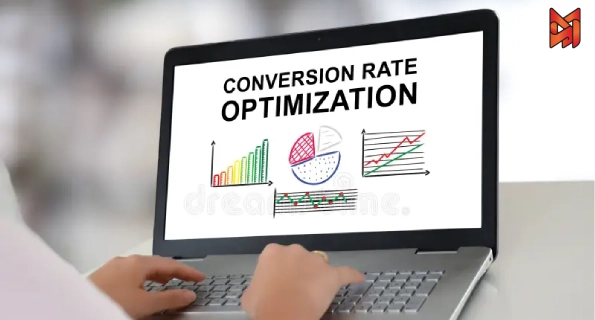In the world of digital marketing, optimizing your website’s performance is crucial to success. One of the most effective strategies for improving your online presence is Conversion Rate Optimization. CRO might be the key if you’ve ever wondered how some websites turn casual visitors into loyal customers. In this article, we’ll discuss what CRO is, why it matters, and how to implement it to achieve impressive results.
What Is Conversion Rate Optimization (CRO)?
Conversion Rate Optimization (CRO) is the process of improving your website or landing page to increase the percentage of visitors who take action, such as making a purchase, signing up for a newsletter, or filling out a contact form. The goal of CRO is to maximize the effectiveness of your website traffic without necessarily increasing the amount of traffic itself.
This process involves analyzing how users interact with your site, identifying areas for improvement, and implementing changes based on data insights to help improve user experience and boost conversion rates effectively.
Why Is CRO Important?
CRO is critical for several reasons, especially if you’re running an online business or relying on your website for lead generation. Here’s why you should care about improving your conversion rate:
- Maximizing Your Existing Traffic: Whether you’re investing in paid ads, SEO, or social media to increase traffic, CRO ensures that the visitors coming to your website are more likely to convert. Instead of spending more money on traffic, you can get better results from the audience you already have.
- Better User Experience: CRO often involves making your website easier to navigate, faster to load, and more straightforward for users to navigate. These improvements make your website more appealing, ultimately building trust and increasing the likelihood of conversions.
- Higher ROI: The more effective your website is at converting visitors into customers or leads, the better return on investment (ROI) you’ll see from your marketing efforts.
- Increased Customer Insights: CRO requires data analysis, and that means you’ll have a deeper understanding of your customers’ behaviors, preferences, and pain points. This insight can inform future marketing strategies and product offerings.
Key Benefits of Conversion Rate Optimization
- Increased Sales and Revenue: By improving your website’s conversion rate, you make more sales from the same amount of traffic. This translates directly to higher revenue without the need to increase marketing budgets.
- Lower Cost per Acquisition (CPA): CRO helps to reduce the cost per lead or sale. Since you’re optimizing for better results with the same or fewer visitors, your CPA naturally decreases.
- Better User Retention: A seamless, user-friendly experience encourages visitors to return. Implementing CRO strategies improves the overall experience on your site, increasing the chances that customers will return for more.
- Competitive Advantage: In industries where competition is fierce, CRO can give you an edge. While your competitors might be pouring money into ads, you can focus on optimizing the performance of your existing website, ultimately outperforming them with better user engagement.

How to Implement CRO on Your Website
Implementing CRO is a step-by-step process that involves analyzing data, testing changes, and continuously improving. Below are the key steps to help you get started:
1. Understand Your Current Conversion Rate
Before making changes, you need to know where you stand. Calculate your current conversion rate by splitting the number of conversions (sales, sign-ups, etc.) by the number of visitors to your site. This gives you a baseline and helps you track improvements over time.
2. Set Clear Goals
CRO is goal-oriented. What specific action do you want visitors to take on your website? Whether it’s purchasing a product, signing up for a newsletter, or downloading an eBook, make sure your goals are clear. This will guide your optimization efforts.
3. Analyze User Behavior
Use tools like Google Analytics to analyze how visitors interact with your website. Pay attention to which pages have the highest bounce rates, which elements attract the most attention, and where users drop off. This will give you insight into areas that need improvement.
4. A/B Testing
A/B testing is one of the most powerful CRO techniques. It involves testing two webpage versions (Version A and Version B) to see which performs better. You can test headlines, call-to-action (CTA) buttons, images, and other elements to identify what resonates most with your audience.
5. Optimize Your Landing Pages
Your landing page is often where conversions happen, so making it as effective as possible is essential. Focus on clarity, simplicity, and relevance. Ensure that your CTA buttons are visible, persuasive, and direct.
6. Improve Site Speed
Page load speed is a crucial factor in CRO. If your site is slow, visitors are more likely to leave before converting. Use tools like Google PageSpeed Insights to assess and improve your site’s load time.
7. Mobile Optimization
With mobile traffic surpassing desktop traffic, optimizing your website for mobile devices is more important than ever. Ensure your website is responsive and provides an excellent user experience across all devices.
8. Build Trust with Social Proof
People are more likely to convert when they trust your brand. Add testimonials, reviews, case studies, or trust badges to your website to boost credibility. The more your visitors trust you, the more likely they are to convert.
CRO Tools You Can Use
Several tools can help you optimize your website and improve your conversion rates. Here are some popular ones:
- Google Analytics: Track user behavior, identify bottlenecks, and measure the effectiveness of changes.
- Hotjar: Heatmaps, session recordings, and surveys that give you insight into how users interact with your site.
In Dimarketo, we have specific tools to optimize your website’s conversion rate.
Measuring the Success of Your CRO Efforts
After implementing CRO strategies, it’s essential to measure their impact. Monitor your conversion rate closely and compare it to your baseline. Keep an eye on other metrics like:
- Bounce Rate: The percentage of visitors who leave your site after viewing only one page. A decrease in bounce rate often indicates improved user engagement.
- Average Session Duration: This is how long visitors stay on your site. A higher session duration usually indicates that users find your content valuable.
- Pages per Session: More pages per session suggest that users are engaged and exploring your site.
If you need conversion rate optimization services, contact us now. DiMarketo’s expert team is here to help you improve your conversion rate and achieve your goals.
Final Thoughts
Conversion Rate Optimization is not just a trend; it’s a vital strategy for any website looking to turn visitors into loyal customers. By focusing on optimizing user experience, streamlining your website, and continually testing changes, you can significantly increase conversions and maximize your ROI. Start implementing CRO today, and watch your business grow!
Remember, in a competitive digital landscape, even small tweaks can make a huge difference. Whether you’re new to CRO or looking to refine your strategies, focusing on the right tactics will set you apart from the competition. With the right mindset and approach, improving your conversion rate is not only possible—it’s a game-changer for your online business.





